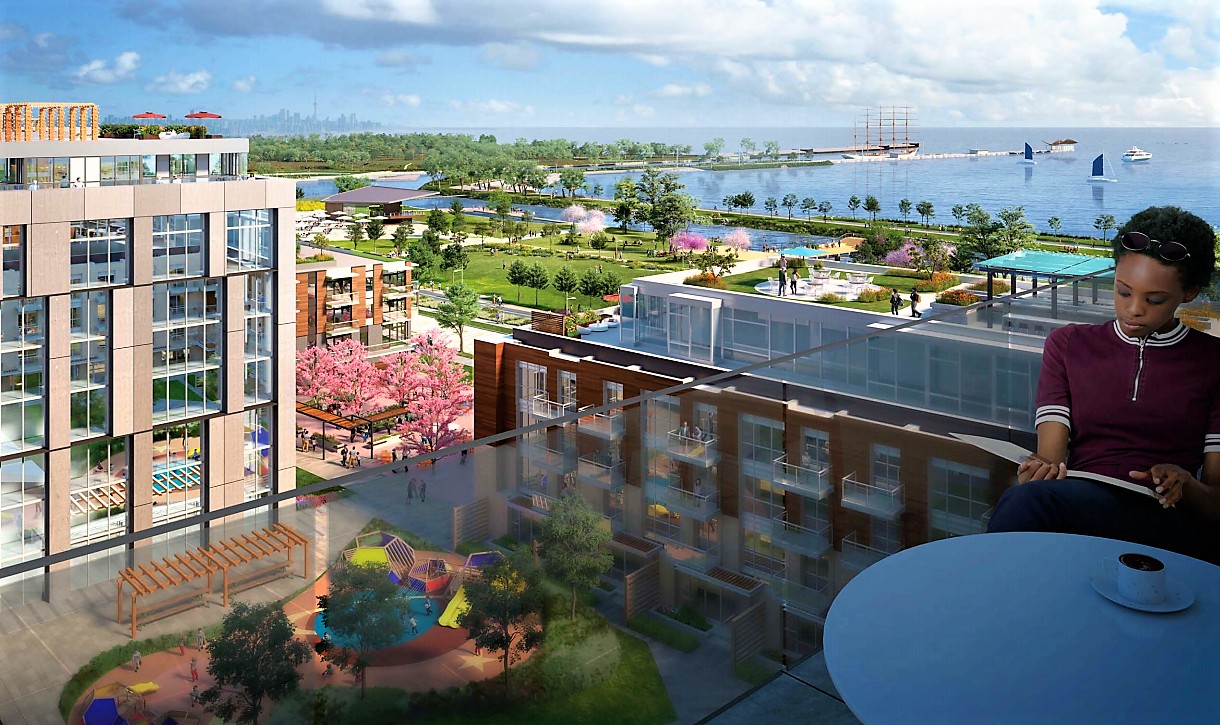
Update: Developers agree to shell out $366,000 for temporary fix to Lakeview’s issue with 'foul odours'
Most associate the waterfront with a brisk breeze, the scents of nature and the refreshing feeling of breathing clean air. Along Lake Ontario in Mississauga, couples take romantic strolls, soaking in the tranquil beauty.
But there’s one uninviting portion of the waterfront, where the old Lakeview Generating Station, the ‘Four Sisters’, used to stand. Nature lovers don’t wander here with the same sense of wonder.
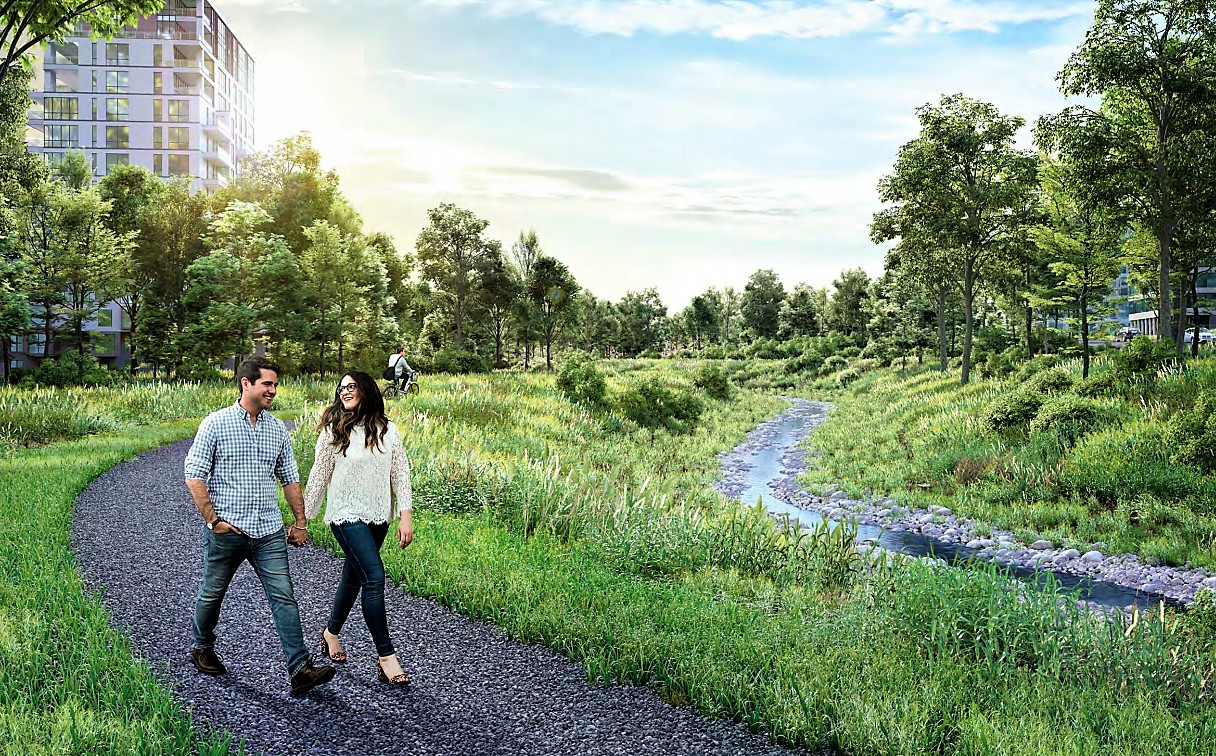
A rendering of the trail system that will surround Lakeview Village
The same spot, a 177-acre parcel of land, is the site of one of the largest redevelopment projects in Ontario’s history, and one of the most ambitious.
It will be “A beautiful green community,” Fabio Mazzocco, President of Lakeview Community Partners Ltd., the development consortium that will build one of the largest projects in the province’s history, said.
The group has estimated the value of its project could be as much as $6 billion.
Lakeview Village will include up to 8,000 residential units for more than 17,000 residents, including townhomes, high-rise apartments and some affordable housing.
The natural beauty of the surrounding area with its setting along one of the Great Lakes, is the key selling point.
Since the giant coal-fired dragon that spewed out tonnes of toxic fly ash was demolished in 2006, the polluted lands have been cleaned to make way for thousands of residents and magnificent waterfront features that will transform the entire area into a dynamic, modern urban village. Renderings of the site show gorgeous apartments and stunning arts and cultural spaces surrounded by natural beauty all set in an idyllic waterfront community.
But the reason people steered clear of the site before wasn’t just because of the power plant belching smoke into the surrounding sky; a sewage treatment plant sits 120 metres from where developers plan to build homes for thousands of families. The air is often filled with the foul odour of waste.
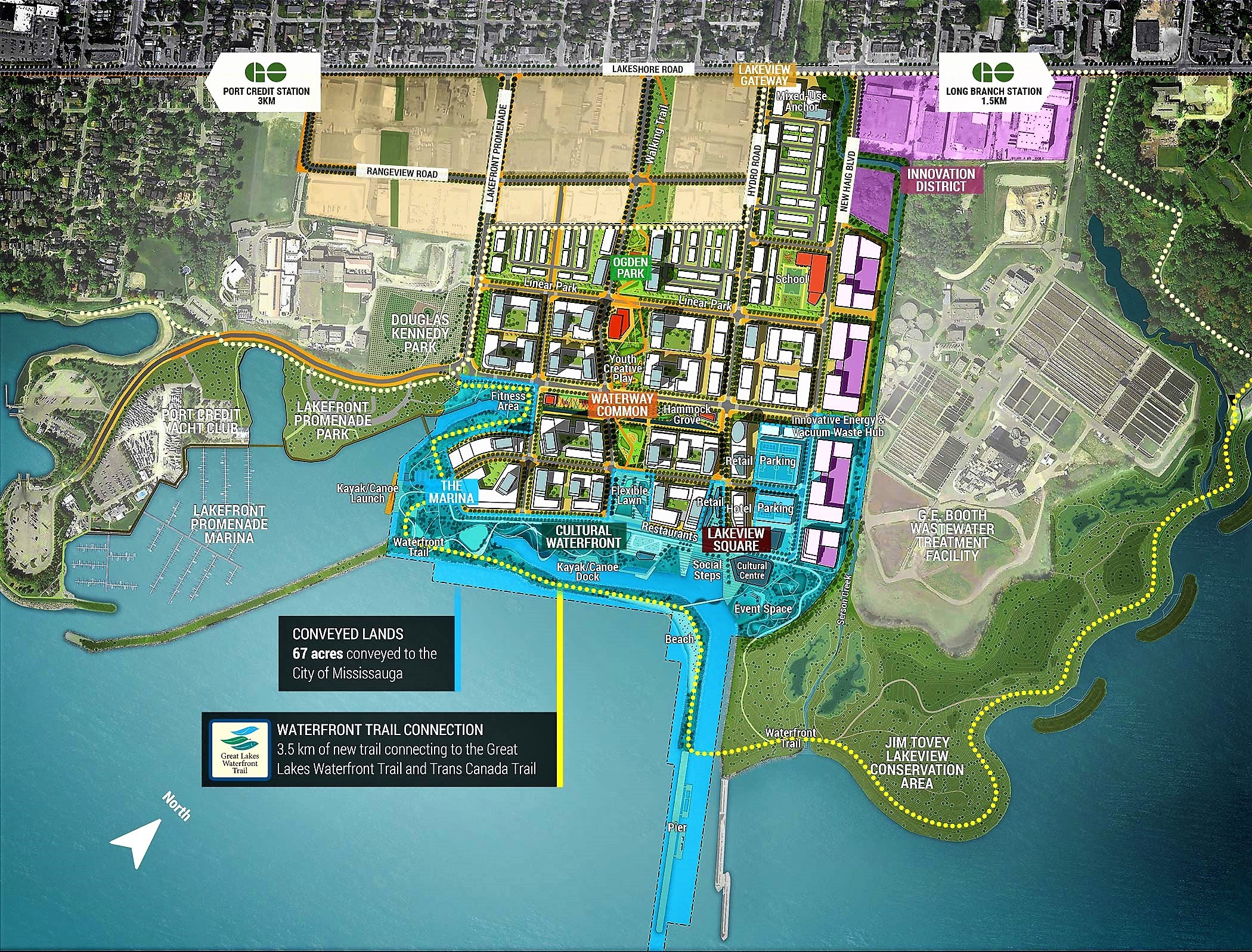
The map above shows the water treatment plant immediately east of the Lakeview Village development
In December, a disagreement arose between Lakeview Community Partners and the Region of Peel about who would pay to deal with the smell of sewage.
At the heart of the discussion was Lakeview’s planned development next to the sewage plant, 30 metres nearer than guidelines set by the Ministry of Environment, Conservation and Parks suggest it should be. It is also significantly closer than any current properties, all of which sit at least 400 metres from the treatment plant.
An assessment was conducted by the Region of Peel to consider the impact dust, noise and odour might have on the sparkling new housing development. Distance was found to mitigate noise, vibration and dust concerns “for the most part”, but the smells were not solved by the location. Instead, “unique measures” are required to keep residents protected from the sometimes unbearable odour.
The December staff report suggested carbon filters could be added to building ventilation systems, coverings could be applied to the treatment facility or even odour filtration systems. Other, less proactive solutions included, “automatic sliding doors on balconies” and “warnings on sales and lease agreements”.
But who will pay for all of it?
The developers argued any mitigation measures should be funded through development fees. The Region said this is not the purpose of such fees, which are used to pay for ordinary municipal infrastructure, and, with Lakeview choosing to build so close to a treatment plant, the cost should fall to them.
Renderings show the project's spectacular use of the surrounding beauty
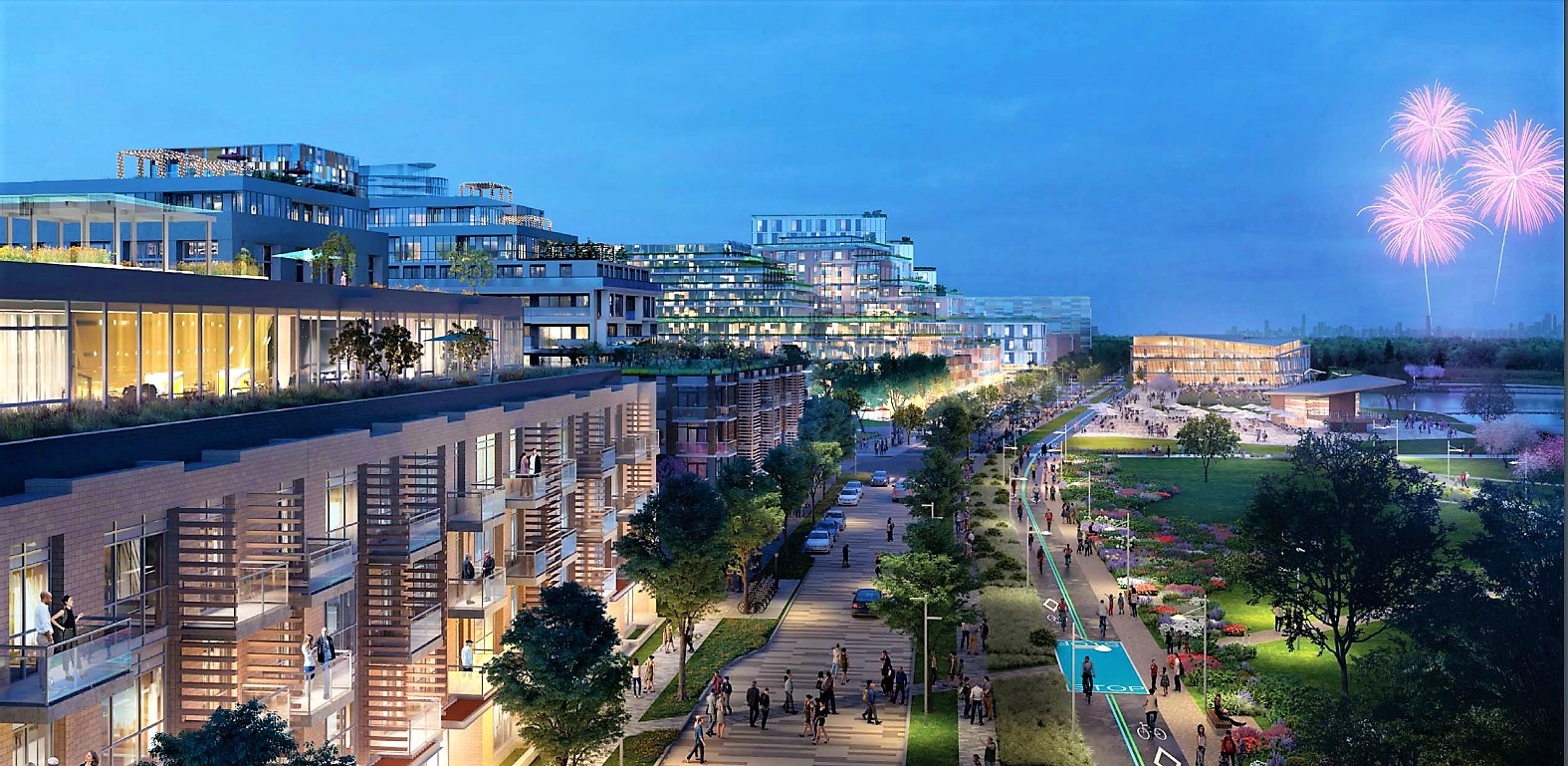
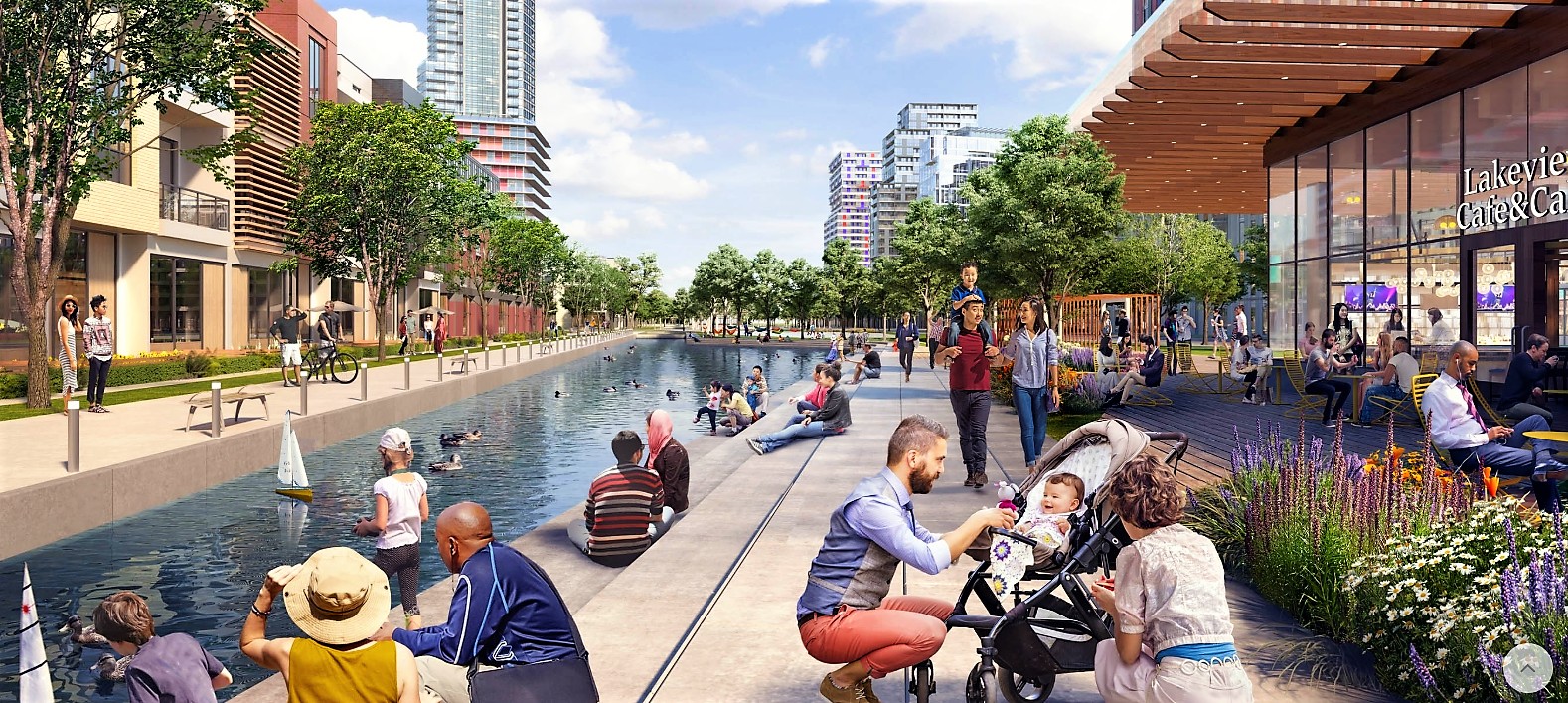
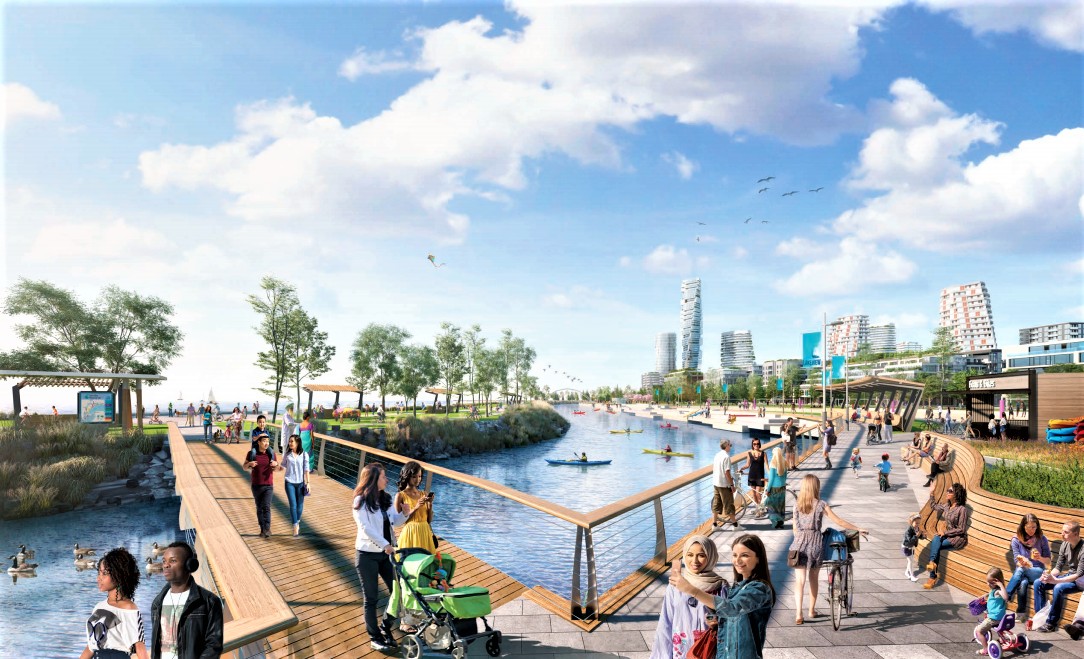
Development fees are carefully legislated to make sure growth pays for growth, funding all the physical and service infrastructure needed to serve new residents. This includes things such as stormwater pipes, roads, sewage, parks, recreation facilities and new transit routes. Traditionally, development charges do not cover the odour mitigation measures Lakeview Village is requesting.
In the short term, developers have agreed to pay for ‘interim’ measures negotiated with the Region.
The solution, which will be operational within 12 to 18 months, is to cover parts of the plant and add an additional odour treatment system. In recognition of the “immediate benefit” the system will bring, Lakeview Community Partners has agreed to foot the full cost of the plan at a price of $366,000.
This strategy will improve the situation, but stops short of being a full fix. “The recommended upgrades are only interim in nature and are a component of a larger-scale mitigation strategy for the facility,” a Regional staff report explains. “Interim odour control work on existing Plant 1 will not fully mitigate odour emissions from the facility. A broader longer-term solution will be proposed later in 2020.”
Mississauga Ward 1 Councillor Stephen Dasko explained the work developers will now fund had to take place regardless, but Lakeview Community Partners stepped in to help speed up the process.
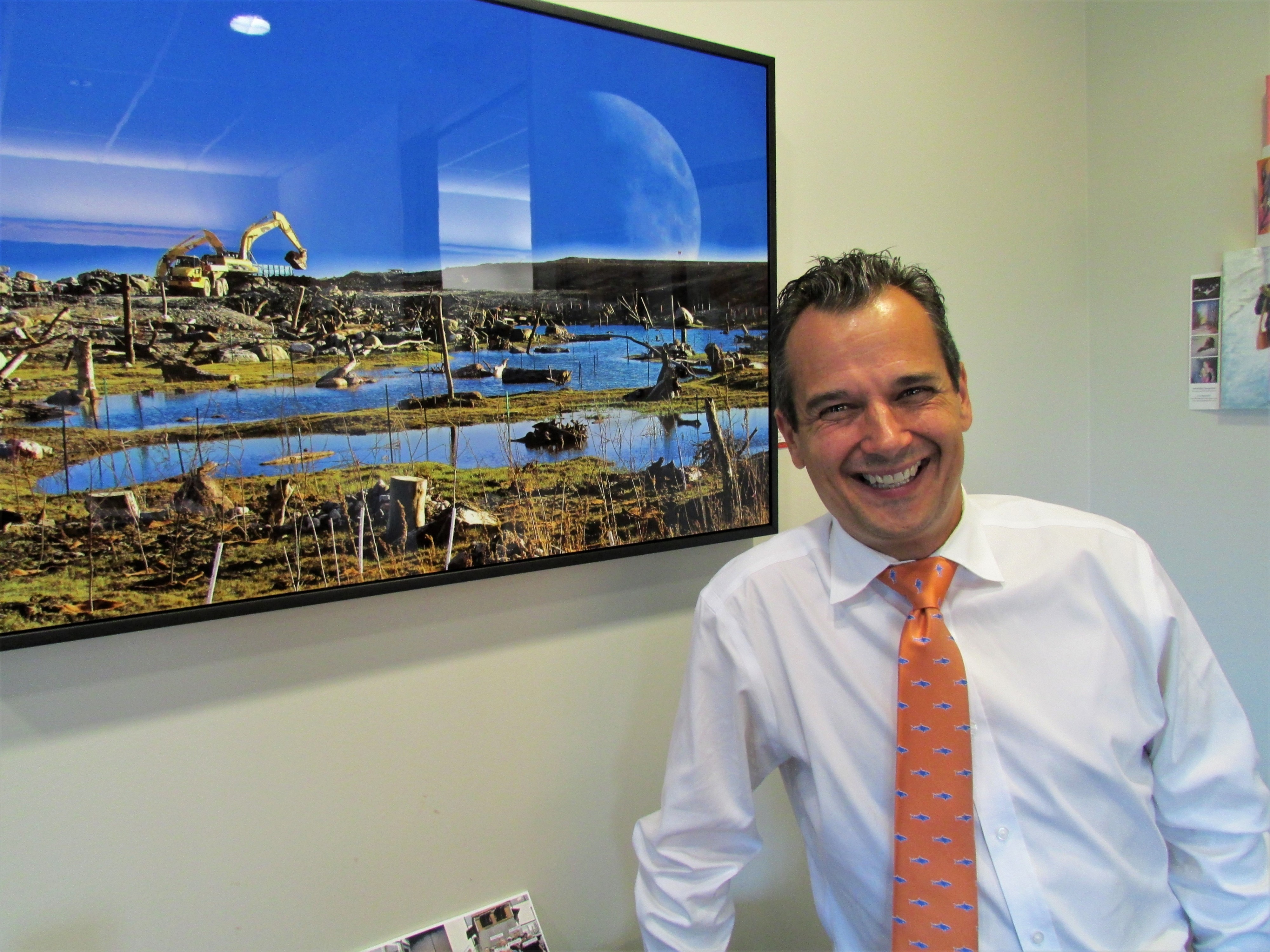
Mississauga Councillor Stephen Dasko
“There’s work that needs to be done upgrading, so one of the things the Lakeview Community Partners have said in the interests of time etc, they’re willing to work with the Region to get the work done sooner than later,” he said.
With the final solution still to be proposed, it remains unclear if it will be Regional coffers or the developers that fund improvements, or a shared arrangement. With the short-term solution costing more than $350,000, it seems likely a permanent fix will cost significantly more. The wastewater treatment plant has been on its current site for more than 70 years, meaning its infrastructure may be outdated and expensive to change.
The short-term deal was accepted by councillors at the Region of Peel last Thursday without discussion, the same rubber-stamped outcome previous staff reports on the topic have been met with.
Despite the lack of debate around the Regional table, the collision course between a wastewater plant and Mississauga’s flagship development project could be a point of future discussion inside the City Council chamber. As of 2019, the Region of Peel received an average of seven complaints per year relating to foul odours wafting from the plant, and that’s with residents living no closer than almost half a kilometre away.
Most of those complaints came from a house situated a full 440 metres from the sewage facility, more than three times the distance compared to where some of the new homes will be built. Much more concentrated odours from a much closer distance pose a far greater concern to Lakeview Village.
The visionary plan is central to Mississauga’s new image as a modern, dense city and developers who ignore provincial recommendations to create a space that seamlessly incorporates the natural surroundings, won’t win favour with stakeholders. Asking taxpayers to pay for their decisions will not be a popular move, especially when the consortium stands to make massive profits from lands along the waterfront that used to be owned by the province, which sold it for the redevelopment.
Instead, stakeholders are touting some of the innovative opportunities the wastewater plant offers. These include plans to use effluent water from the facility as a source of thermal energy for housing, providing a pioneering form of zero emissions heating for the new houses.
Regional staff will complete studies into a longer-term solution and its cost this year. A report will be considered by councillors before the end of the year and a deal with the development group will be negotiated.
Email: [email protected]
Twitter: @isaaccallan
Tel: 647 561-4879
Submit a correction about this story


